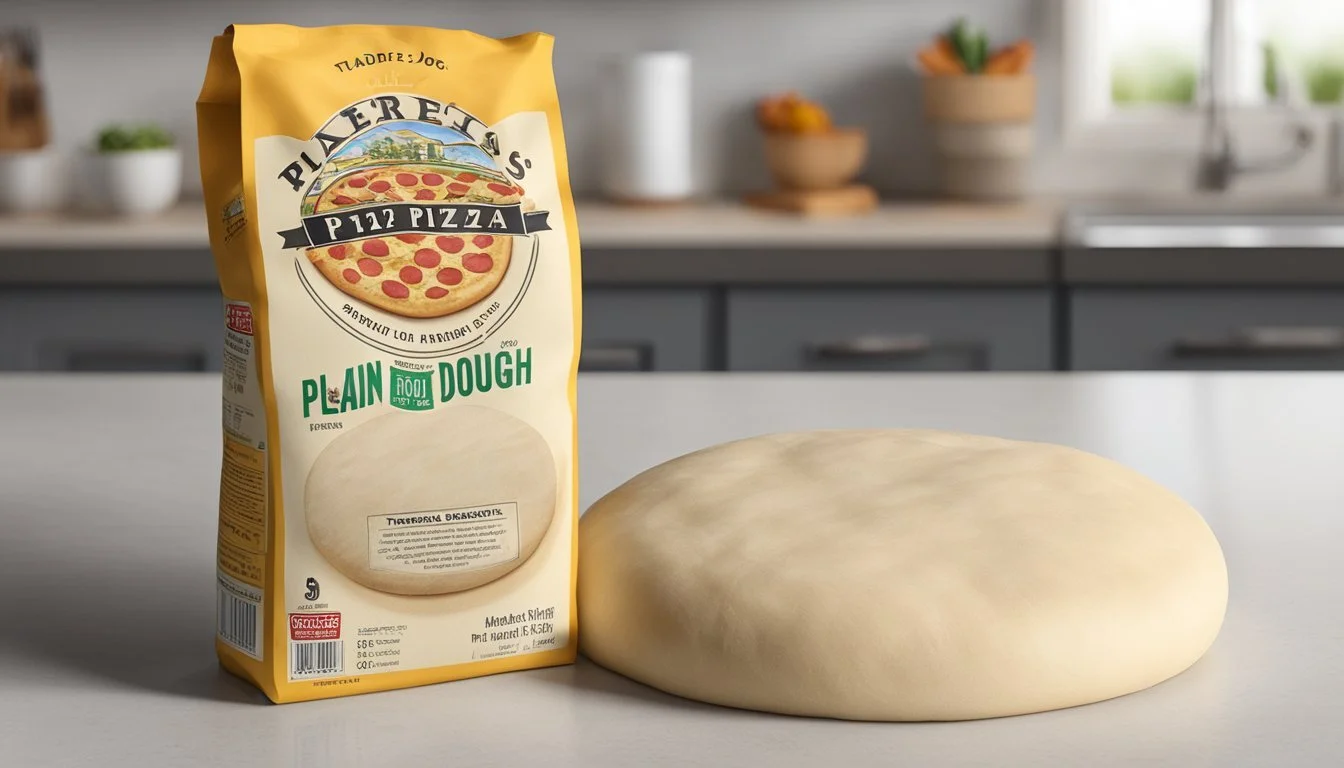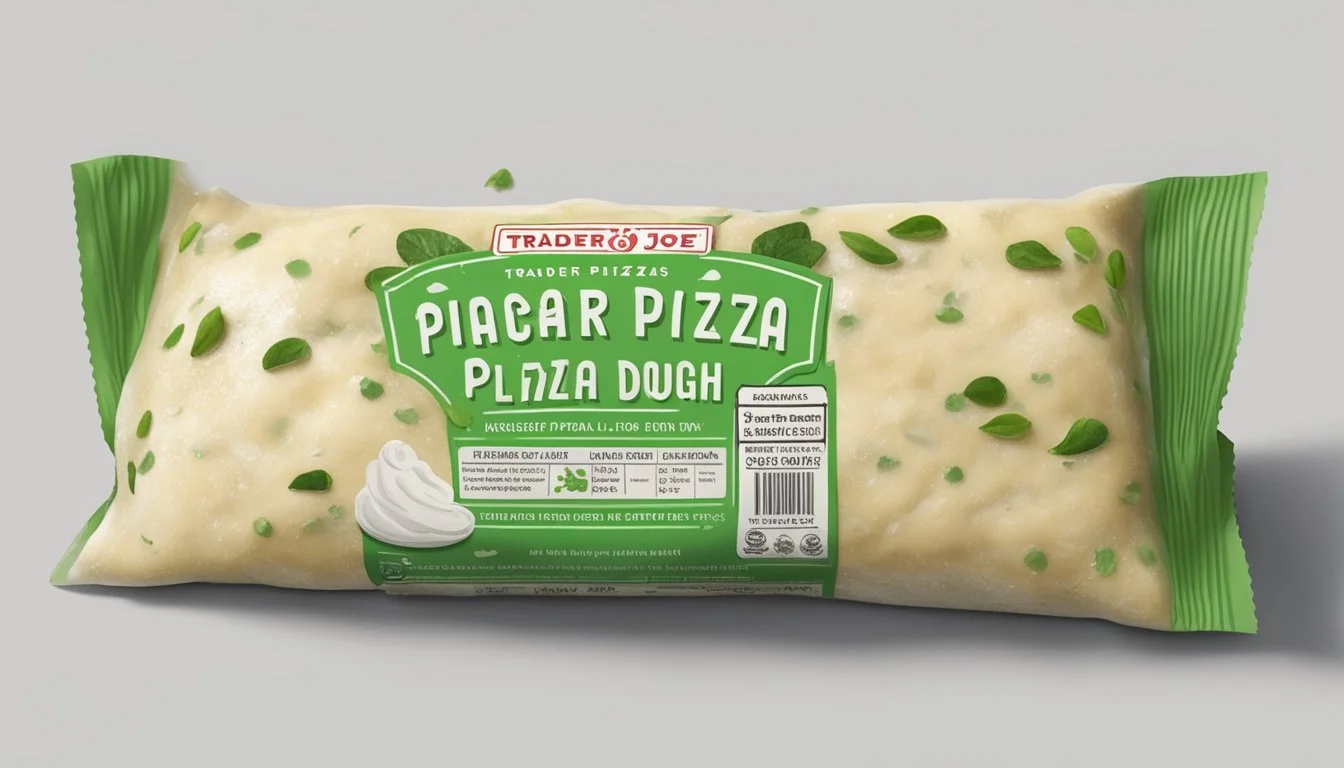How Long Does Trader Joe's Plain Pizza Dough Last?
Shelf Life and Storage Tips
Trader Joe's pizza (What wine goes well with pizza?) dough is a convenient option for those who enjoy crafting homemade pizzas with a ready-made base. The dough's shelf life is a matter of proper storage and attention to detail, including the condition of its packaging and whether it remains sealed. When refrigerated, Trader Joe's pizza dough can last up to a week, allowing enthusiasts ample time to plan their pizza-making activities. Refrigeration is key to maintaining the freshness and usability of the dough.
However, if left at room temperature, the dough should be used within a few hours to prevent over-proofing and spoilage. Recognizing the perishable nature of the product is important, as fresh dough is prone to bacteria growth if not stored correctly. For those who may not use the dough within the refrigerator's time frame, freezing can be an effective alternative. Frozen Trader Joe's pizza dough can maintain its quality for several months, making it a practical solution for prolonged storage.
It's crucial to be mindful of expiration dates and to inspect the dough before use. Signs of spoilage may include changes in color or an off odor, indicating that the dough is no longer suitable for consumption. Ensuring the pizza dough remains within safe consumption guidelines guarantees the best homemade pizza experience with Trader Joe's pizza dough.
Understanding Pizza Dough
When discussing Trader Joe's pizza dough, it is crucial to consider both its composition and the factors that influence its shelf life, as this knowledge determines the storage and usability of the dough.
Composition and Types
Pizza dough typically consists of a mixture of flour, water, yeast, salt, and sometimes oil. The yeast is the driving force behind the fermentation process, which not only causes the dough to rise but also affects flavor and texture. There are various types of dough available, including homemade dough and pre-made dough like that of Trader Joe's. The primary difference lies in the freshness of ingredients and the absence or presence of preservatives.
Trader Joe's offers plain pizza dough, which contains:
Carbohydrates: 25g
Net Carbs: 24g
Dietary Fiber: 2g
Fat: 2.5g
Protein: 5g
Sodium: 440mg
Shelf Life Factors
The shelf life of pizza dough is influenced by multiple factors such as:
Temperature: Dough will last about 4-6 hours at room temperature. In a refrigerator, it may stay good for several days.
Yeast Activity: Yeast, a living organism, becomes more active at warmer temperatures and less so in the cold. This impacts how long the dough can be used before over-proofing.
Freshness: A dough's shelf life is also contingent upon how fresh the ingredients were at the time of its preparation.
Expiration Date: Pre-made doughs, including those from Trader Joe's, often have an expiration date, which should be adhered to for optimal quality and safety.
It is advisable to store pizza dough in an airtight container, and if one is using Trader Joe's dough, to follow the specific storage instructions provided to maximize its lifespan.
Storage Practices
When it comes to maintaining the quality of Trader Joe's plain pizza dough, proper storage is crucial. Adhering to the right techniques can significantly prolong the dough's usability, keeping it fresh and ready for your next pizza night.
Refrigerated Storage
Trader Joe's plain pizza dough should be stored in the refrigerated section as soon as it is brought home from the store. It is recommended to keep the dough in its original packaging to minimize exposure to air. Ideally, the dough will last up to 5 days if refrigerated properly. Temperature control is key; the refrigerator should be set at or below 40°F (4°C) to ensure the dough remains in a dormant state, preventing overgrowth of yeast and bacteria.
Freezing Techniques
For longer storage, the dough can be kept in the freezer. To properly freeze the pizza dough, one should first coat it lightly with olive oil, which helps to prevent freezer burn. Then, place the oiled dough in a freezer bag, squeezing out as much air as possible before sealing. The dough's quality is usually best if used within 1 to 2 months. When ready to use, it should be thawed in the refrigerator overnight.
Extending Shelf Life
Handling of store-bought dough can also impact its shelf life. To further extend the shelf life of Trader Joe's plain pizza dough:
Always wash hands before and after handling the dough to reduce bacterial transfer.
If the packaging is damaged or opened, transfer the dough to an airtight container or resealable bag to prevent it from drying out.
Minimize the dough's exposure to air, even when in the refrigerator or freezer, as this can impact taste and texture.
Adhering to these storage practices will ensure that Trader Joe's plain pizza dough remains fresh and delicious, retaining its quality until it’s ready to be turned into a delightful homemade pizza.
Indicators of Spoilage
When assessing whether Trader Joe's plain pizza dough has spoiled, it is crucial to consider physical alterations, scent, and taste that deviate from its fresh state. These indicators suggest the presence of bacteria or spoilage, which can pose a health risk if consumed.
Visual Signs
Color: Fresh dough typically has a white to beige appearance. The presence of grey color is a clear indicator of spoilage.
Mold: Any mold growth, which can appear as fuzzy spots of various colors, signifies that the dough should be discarded.
Smell and Texture
Odor: An off-smell or uncharacteristic odor is often the first sign of bacterial growth and spoilage.
Texture: Dough should feel pliable and smooth. A gooey or unusually sticky texture may indicate that it has gone bad.
Taste and Alcohol Content
Taste: Although it's not recommended to taste raw dough, a sour taste can indicate spoilage.
Alcohol Content: A high alcohol smell suggests fermentation beyond normal levels, which is a sign of spoilage, especially if the expiration date has passed.
Usage Ideas and Enhancements
Trader Joe's pizza dough offers versatility, allowing both novice and experienced home cooks to create a variety of delicious baked goods. Here's how one can get creative with it or simply enhance their homemade pizza experience.
Creative Recipes
One can easily step beyond the traditional pizza with Trader Joe's pizza dough. Experiment to make these delightful creations:
Calzones: Stuff the dough with mozzarella, ricotta, spinach, and prosciutto for a hearty meal.
Garlic Knots: Cut into strips, tie into knots, and toss in olive oil and garlic for a tasty side dish.
Homemade Breads: Shape dough into loaves or baguettes; seasoned with herbs, these make for an excellent complement to any meal.
Selecting Toppings
Toppings can make or break a pizza. Here's what to consider:
Balance is Key: Combine sweet caramelized onions with savory prosciutto, or pair gouda with arugula for a gourmet touch.
Textures Matter: Add a mix of soft cheeses, like mozzarella, and harder, flavorful options, such as gouda or pecorino romano.
Pizza Dough Transformation
Tranform the dough from its humble beginnings to a quick pizza night star or a show-stopping homemade pizza:
Quick Pizza: For those in a rush, a simple topping of mozzarella, tomato sauce, and fresh herbs can suffice.
Homemade Pizza: Take time to let the dough rise and experiment with gourmet toppings like arugula, roasted garlic, or various cheeses for creative flavor profiles.
Thawing and Preparing Dough
Properly thawing and preparing Trader Joe's plain pizza dough will affect the final texture and flavor of the pizza. Handling the dough with care ensures it retains the right consistency for optimal baking results.
Proper Thawing Techniques
Trader Joe's plain pizza dough is usually sold refrigerated, but it can be frozen if not used by its expiration date. To thaw frozen dough, one should transfer it from the freezer to the refrigerator for several hours, preferably overnight. This gradual thawing process prevents the dough from experiencing temperature shock, which can negatively affect its texture. The dough should be used within 24 hours of defrosting for the best results. One must never thaw pizza dough at room temperature
FAQs and Tips
In this section, the reader will find direct answers to common inquiries about Trader Joe's pizza dough, alongside practical advice, and where to seek further information on Trader Joe's products.
Common Questions Answered
How long does Trader Joe's pizza dough last? Trader Joe's pizza dough can maintain its quality for up to three days when refrigerated.
Can you detect if the dough has gone bad by color or smell? Yes, if the dough has a sour smell or discoloration, it's a sign it should not be used.
Additional Tips for Home Cooks
Spices: Enhance your pizza with spices like garlic powder, oregano, or basil.
Sides: Complement your pizza with sides such as a fresh salad or garlic knots.
Trader Joe's Resources
Website: For reviews and a concise list of FAQs, Trader Joe's official website is the best resource.
Customer Review: Trader Joe's encourages feedback on products to continually improve offerings.
Remember to utilize these guidelines when preparing pizza at home to ensure the best results with Trader Joe's pizza dough.






